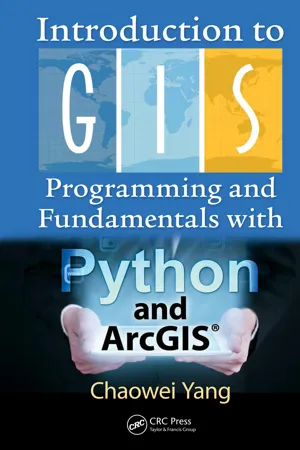
Introduction to GIS Programming and Fundamentals with Python and ArcGIS®
Chaowei Yang
- 302 pages
- English
- ePUB (mobile friendly)
- Available on iOS & Android
Introduction to GIS Programming and Fundamentals with Python and ArcGIS®
Chaowei Yang
About This Book
Combining GIS concepts and fundamental spatial thinking methodology with real programming examples, this book introduces popular Python-based tools and their application to solving real-world problems. It elucidates the programming constructs of Python with its high-level toolkits and demonstrates its integration with ArcGIS Theory. Filled with hands-on computer exercises in a logical learning workflow this book promotes increased interactivity between instructors and students while also benefiting professionals in the field with vital knowledge to sharpen their programming skills. Readers receive expert guidance on modules, package management, and handling shapefile formats needed to build their own mini-GIS. Comprehensive and engaging commentary, robust contents, accompanying datasets, and classroom-tested exercises are all housed here to permit users to become competitive in the GIS/IT job market and industry.